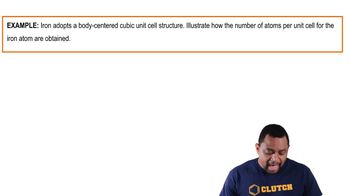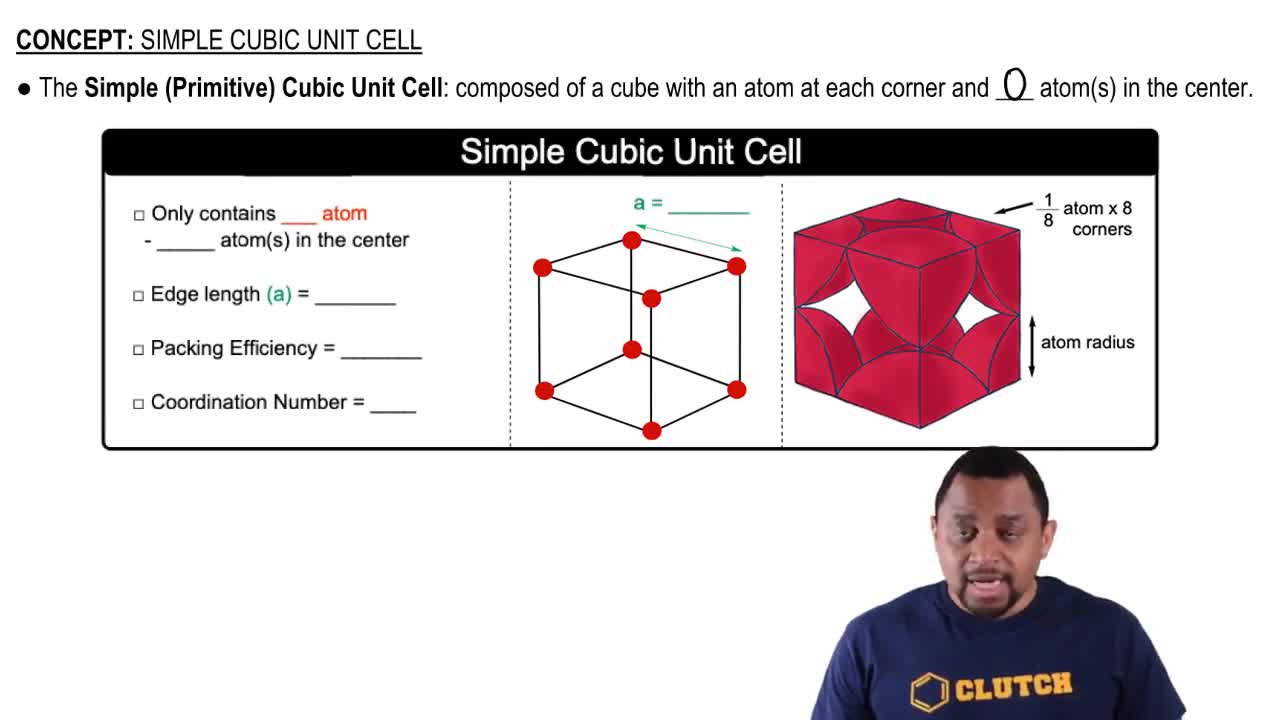Here are the essential concepts you must grasp in order to answer the question correctly.
Body-Centered Cubic (BCC) Structure
The body-centered cubic (BCC) structure is a type of crystal lattice where atoms are located at each corner of a cube and a single atom is positioned at the center of the cube. In this arrangement, each unit cell contains two atoms, as the corner atoms contribute only a fraction of their volume to the unit cell. Understanding this structure is essential for calculating properties like edge length and density.
Recommended video:
Body Centered Cubic Example
Unit Cell Edge Length Calculation
The edge length of a unit cell in a BCC structure can be calculated using the relationship between the atomic radius and the geometry of the unit cell. For BCC, the edge length 'a' is related to the atomic radius 'r' by the formula a = 4r/√3. This relationship is crucial for determining the dimensions of the unit cell based on the given atomic radius.
Recommended video:
Density Calculation
Density is defined as mass per unit volume and can be calculated for a crystalline solid using the formula density = (mass of atoms in unit cell) / (volume of unit cell). For a BCC structure, the mass can be determined from the number of atoms in the unit cell and the molar mass of the element, while the volume is derived from the cube of the edge length. This concept is vital for understanding the material properties of molybdenum.
Recommended video:
 Verified step by step guidance
Verified step by step guidance


